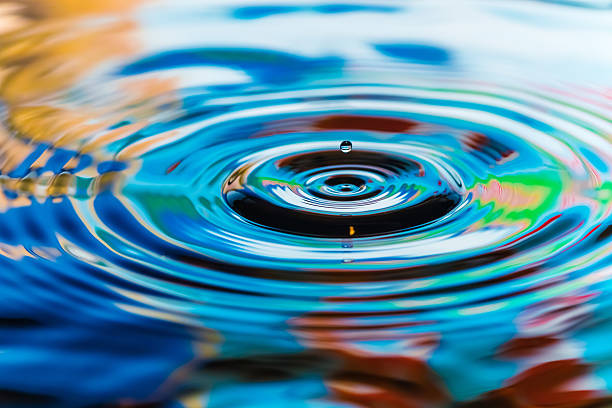Print Perfection: Designing for the Physical Realm
In the digital age, where screens dominate our daily interactions, print design retains a timeless allure. “Print Perfection: Designing for the Physical Realm” explores the art and intricacies of creating designs that transcend the digital space, finding their canvas on tangible surfaces. From the principles of print design to the tactile experience of holding a well-crafted piece, this guide illuminates the magic of print and the strategies employed to achieve perfection in the physical realm.
I. Embracing the Principles of Print Design
1.1 The Essence of Print Design
Print design is a tactile and visual journey that unfolds on physical surfaces. This section will explore the fundamental principles of print design, emphasizing the importance of resolution, color management, and layout considerations specific to the printed medium. Understanding the unique characteristics of print lays the foundation for achieving perfection in the physical realm.
1.2 Print vs. Digital: Considerations and Adaptations
Designers transitioning from digital to print must navigate the nuances of the physical realm. This part of the guide will delve into the considerations and adaptations necessary for creating designs that shine on paper, including adjusting color profiles, selecting appropriate resolutions, and understanding the limitations of print.
II. The Art of Paper Selection and Texture
2.1 Choosing the Right Paper Stock
Paper is more than a canvas; it’s a crucial component of print design. Designers will explore the diverse world of paper stocks, considering factors such as weight, finish, and texture. The choice of paper profoundly influences the look and feel of the final printed piece, contributing to the overall aesthetic and tactile experience.
2.2 Texture as a Design Element
The tactile quality of print design adds a layer of richness that digital mediums can’t replicate. This section will delve into the art of incorporating texture as a design element. From embossing to spot varnishes, designers can use texture to enhance visual interest and create a sensory experience for the audience.
III. Color Precision and Printing Technologies
3.1 Achieving Color Accuracy in Print
Print perfection demands precise color management. Designers will explore techniques for achieving color accuracy in print, from calibrating monitors to selecting Pantone colors. The challenge lies in ensuring that the intended colors are faithfully reproduced on the final printed piece.
3.2 Spot Colors and Special Inks
Beyond the standard CMYK palette, designers can enhance their print designs with spot colors and special inks. This part of the guide will discuss how spot colors and metallic, fluorescent, or even scented inks can elevate the visual and sensory experience of print materials.
IV. Layout and Typography for Print
4.1 Print Layout: Grids and Proportions
Print design often adheres to established layout principles, including grids and proportional systems. Designers will explore how the use of grids and careful attention to proportions contribute to a visually harmonious layout. The goal is to create designs that are aesthetically pleasing and structurally sound for the physical medium.
4.2 Typography: Balancing Legibility and Aesthetics
Typography takes center stage in print design, where readability and aesthetics must strike a delicate balance. Designers will delve into the considerations for selecting fonts, adjusting kerning and leading, and ensuring that the text is both visually appealing and easy to read on the printed page.
V. Print Finishes and Special Techniques
5.1 Adding Finesse with Print Finishes
Print perfection extends beyond the design phase to the finishing touches. This section will explore various print finishes, including gloss and matte coatings, foil stamping, and die-cutting. Designers can strategically use these finishes to add finesse, create visual contrasts, and make printed materials stand out.
5.2 Embellishments and Special Techniques
Embellishments such as embossing, debossing, and foil stamping bring a tactile and luxurious feel to print designs. Designers will discover how these special techniques can be employed to create a sense of exclusivity and sophistication, turning ordinary print materials into extraordinary pieces.
VI. Print Collateral for Branding
6.1 The Role of Print in Branding
Print materials play a crucial role in establishing and reinforcing brand identity. This section will explore how print collateral, including business cards, brochures, and stationery, contributes to a cohesive and memorable brand presence. Designers will learn to infuse brand personality into every piece of print collateral.
6.2 Consistency Across Print and Digital Platforms
Print and digital elements should work harmoniously to reinforce a brand’s visual identity. Designers will explore strategies for maintaining consistency across both mediums, ensuring that the brand’s colors, fonts, and overall aesthetic are cohesive whether viewed on a screen or in print.
VII. Environmental Considerations in Print Design
7.1 Sustainable Print Practices
Print perfection is not only about visual appeal but also about ethical and environmental considerations. Designers will explore sustainable print practices, from choosing eco-friendly paper options to minimizing waste through efficient printing processes. Embracing sustainability adds an ethical dimension to print design.
7.2 Print as a Keepsake: Longevity and Memories
Unlike digital ephemeral content, print materials have the potential to become keepsakes. This part of the guide will delve into the concept of print as a lasting memory, exploring how well-designed print materials can evoke nostalgia and create enduring connections with audiences.
VIII. Print in the Digital Age: Bridging the Gap
8.1 QR Codes and Interactive Elements
Print and digital worlds can coalesce through the strategic use of QR codes and interactive elements. Designers will explore how QR codes on print materials can seamlessly connect users to digital content, bridging the gap between the tangible and the virtual.
8.2 Augmented Reality (AR) in Print Design
The integration of augmented reality (AR) in print design opens new dimensions of interactivity. Designers can create immersive experiences by overlaying digital content on printed materials through AR. This section will explore the possibilities and techniques of incorporating AR into print designs.
Conclusion
“Print Perfection: Designing for the Physical Realm” celebrates the enduring allure of print design in an increasingly digital world. From the selection of paper stock to the intricacies of color accuracy and finishing touches, designers embark on a journey of tactile and visual excellence. Print design not only transforms information into a tangible form but also elevates it to the realm of artistry. As designers master the principles and techniques outlined in this guide, they unlock the magic of print, creating pieces that captivate, inspire, and stand the test of time in the physical realm.






